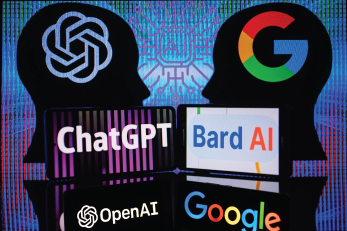1. Ethical Frameworks for Responsible AI Deployment
To deploy AI responsibly, organizations must prioritize ethical considerations. Here are the core principles:
- Transparency: Ensure that AI models and decisions are understandable to stakeholders. Use explainable AI (XAI) frameworks to break down complex algorithms.
- Fairness: Avoid bias by conducting regular audits of your AI systems. Implement diverse training datasets to reduce discrimination.
- Accountability: Establish clear lines of accountability for AI-driven decisions. Assign roles such as AI Ethics Officers to oversee compliance.
- Privacy: Comply with data protection laws like GDPR and CCPA. Implement techniques like differential privacy to protect user data.
- Sustainability: Design energy-efficient AI models and minimize environmental impact by using sustainable cloud services.
Action Tip: Create an AI Ethics Charter tailored to your organization’s values and industry-specific challenges.
2. Integrating AI Seamlessly into Your Workflow
Adopting AI doesn’t require an overhaul of your existing systems. Follow these steps for a smooth integration:
- Start Small: Begin with a pilot project in a single department, such as customer service or marketing.
- Use Low-Code Platforms: These allow non-technical teams to experiment with AI tools.
- Leverage APIs: Many AI capabilities can be accessed via APIs, enabling integration without building from scratch.
- Training & Upskilling: Train employees on AI basics to ensure smooth adoption and reduce resistance.
Action Tip: Map out repetitive tasks in your organization and identify which ones can benefit from automation through AI.
3. Case Studies of Businesses Successfully Using AI
Example 1: Retail Giant Optimizes Supply Chain
A global retailer reduced stockouts by 30% using predictive analytics powered by AI. By analyzing purchasing trends and weather data, they forecast demand more accurately.
Example 2: Healthcare Innovator Improves Diagnosis
An AI-powered diagnostic tool helped a hospital reduce misdiagnosis rates by 25%. The tool analyzed medical imaging with high accuracy.
Example 3: Startup Gains Marketing Insights
A small business used AI-driven sentiment analysis to tailor their marketing campaigns, leading to a 40% increase in customer engagement.
Action Tip: Research industry-specific AI applications and identify similar use cases for your organization.
4. Leveraging Competitive Intelligence Through AI
AI can transform how businesses gather and act on competitive intelligence:
- Web Scraping: Use AI tools to gather insights on competitors’ pricing, customer reviews, and marketing strategies.
- Social Listening: Monitor brand sentiment and customer feedback in real time.
- Predictive Analytics: Forecast market trends and adjust your strategy proactively.
Action Tip: Invest in AI tools like Crayon or SimilarWeb to gain actionable competitive insights.
5. Demystifying Common Misconceptions About AI
Myth 1: AI Will Replace All Jobs
Reality: AI automates tasks, not jobs. It’s a tool that enhances human capabilities rather than replacing them entirely.
Myth 2: AI Is Only for Big Tech
Reality: Small businesses can leverage off-the-shelf AI solutions like chatbots and CRM integrations.
Myth 3: AI Requires Extensive Technical Knowledge
Reality: No-code and low-code platforms make AI accessible to non-technical users.
Action Tip: Educate your team about AI’s capabilities and limitations through workshops or e-learning platforms.
6. Practical AI Vocabulary for Business Leaders
- Algorithm: A set of rules a computer follows to solve problems.
- Machine Learning: A subset of AI where systems learn from data to improve performance.
- Natural Language Processing (NLP): Enables machines to understand and process human language.
- Deep Learning: A type of machine learning using neural networks to mimic human decision-making.
- Data Training: The process of teaching AI systems using datasets.
Action Tip: Share a glossary of AI terms with your leadership team to foster better understanding and discussions.
7. Overcoming Common Challenges in AI Adoption
Challenge 1: Lack of Expertise
Solution: Partner with AI vendors or consultants to bridge the knowledge gap.
Challenge 2: High Costs
Solution: Begin with scalable solutions and leverage cloud-based AI services to reduce upfront investment.
Challenge 3: Data Silos
Solution: Implement a unified data management strategy to ensure all relevant data is accessible.
Action Tip: Conduct a readiness assessment to identify gaps and opportunities before implementing AI.
By addressing these facets of AI adoption, your organization can position itself as a leader in innovation while navigating the complexities of responsible and effective AI deployment. The future of business lies in harnessing the power of AI—and with the right tools and strategies, it can work for YOUR business too.


